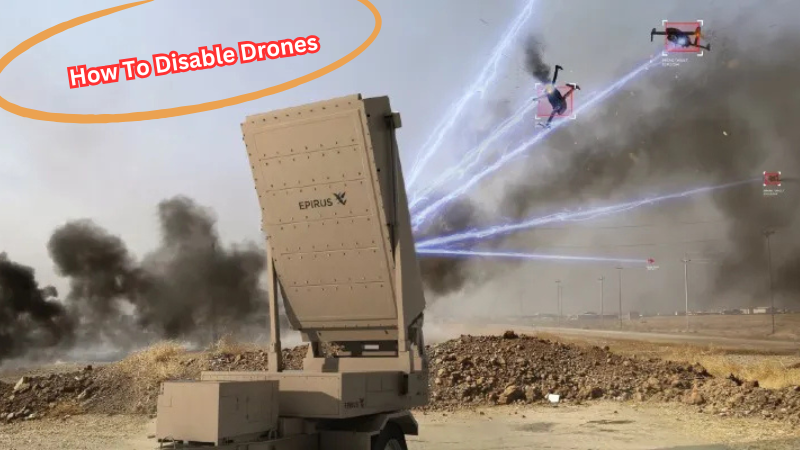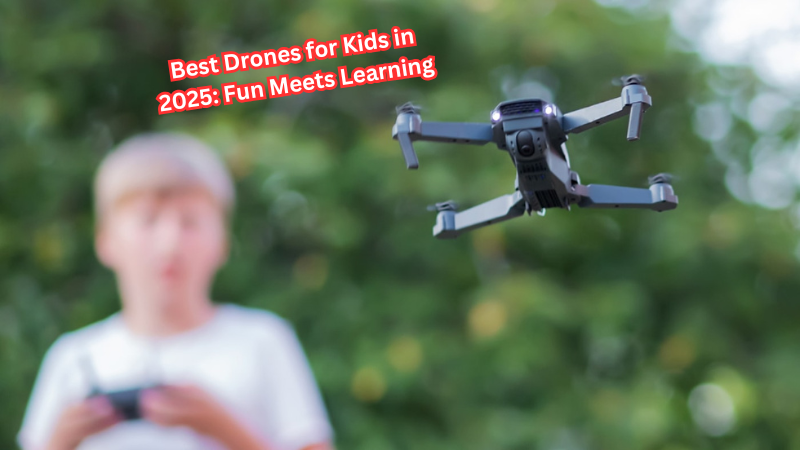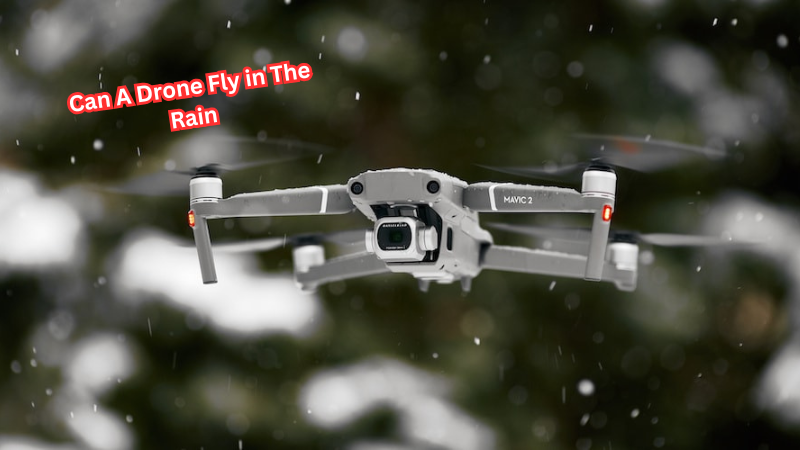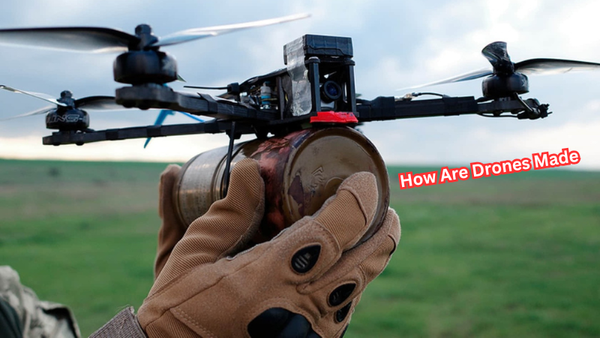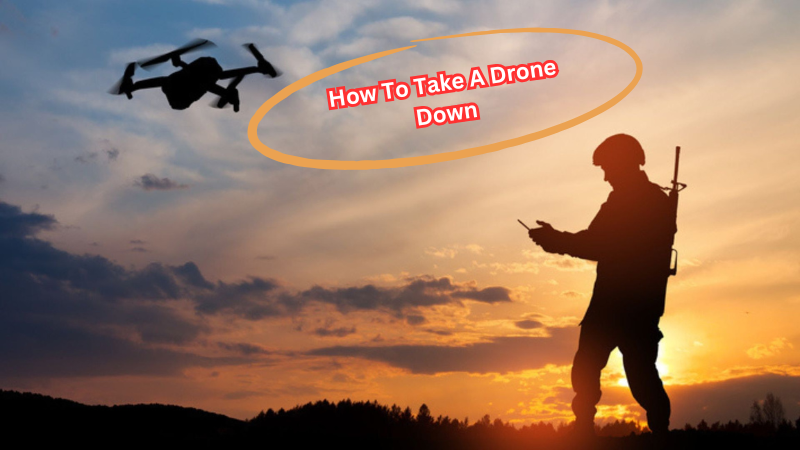Drones have become a regular part of modern life, offering exciting photography, delivery, and recreation possibilities. However, their growing presence raises concerns about privacy, safety, and unauthorized use. Imagine a drone hovering near your property, capturing footage without consent, or creating potential risks in restricted airspace.
These situations may make you consider ways to disable such devices, but it’s crucial to tread carefully. Interfering with a drone can have serious legal and ethical implications, as drones are often protected under property and aviation laws.
This guide explores the topic in detail, outlining various methods for addressing intrusive drones while emphasizing the importance of staying within legal boundaries and prioritizing safety at all times.
How Drone Works
Drones are remarkable machines designed to achieve stable, controlled flight through the interaction of several key components.
At the core is the drone's frame, which provides the structural foundation and houses other essential parts. Attached to the frame are motors and propellers that create the lift and thrust required for the drone to fly. The battery powers these motors, while the control system ensures efficient energy use and precise movements.
Stability during flight is achieved using a gyroscope and accelerometer. These tools measure orientation and movement, sending data to the onboard computer, which adjusts motor speeds to counteract tilts or drifts. The onboard computer is the drone’s brain, processing data from sensors and executing commands in real time.
Drones are controlled remotely via radio signals sent from a controller or smartphone. Many models also incorporate GPS technology, allowing for accurate positioning and autonomous navigation. Together, these components work in harmony, enabling the drone to hover, maneuver, and perform complex tasks with precision.
The Need for Disabling Drones
Drones have raised concerns about privacy and safety. Here are some common reasons why people may want to disable them:
- Protection of Privacy: Drones equipped with cameras can capture images and videos in public or private spaces without consent, potentially violating someone's right to privacy.
- Safety Concerns: Unauthorized drone flights near airports or other restricted airspace can pose a threat to the safety of aircraft and people on the ground.
- Property Damage: Inexperienced or careless drone pilots may lose control of their devices, resulting in damage to property or injury to individuals.
- Noise Pollution: Continuous buzzing from low-flying drones can be disruptive and disturb the peace in residential areas.
- Personal Security: In some cases, drones may be used for malicious purposes, such as spying or delivering dangerous payloads.
These are just a few examples of why someone may want to disable a drone. While the reasons may vary, it’s crucial to address them carefully and legally.
Legal Considerations
Understanding the legal implications of interfering with drones is essential before taking action. Drones are governed by a complex web of federal, state, and local regulations. For example, in the United States, the Federal Aviation Administration (FAA) oversees drone use, classifying them as aircraft protected under aviation laws. Any attempt to disrupt or harm a drone, such as jamming its signal or forcibly bringing it down, could be considered unlawful and lead to penalties ranging from fines to criminal charges. Local statutes may also impose additional restrictions on drone activity.
Interfering with a drone could infringe on property rights or endanger public safety, so caution is paramount. If you are uncertain about the legality of any action, it’s wise to consult a legal professional to ensure compliance with the law. Ultimately, respecting others' property and adhering to legal requirements is crucial to avoiding serious repercussions. Always explore viable legal alternatives before considering direct interference with a drone.
How To Disable Drones
Now that the importance of understanding the legal implications has been emphasized, let's discuss some effective methods for disabling drones. It’s essential to note that these techniques should only be used in situations where it is legally and ethically justifiable.
Physical Interference
One way to disable a drone is through physical interference. This method involves using physical barriers or objects to obstruct the drone’s flight path or cause damage. The effectiveness of this approach depends on factors such as the size and weight of the drone, its altitude, and the speed at which it is flying.
- Throwing Objects: In some cases, throwing objects like rocks or balls can cause a drone to lose control or damage its rotors, resulting in a crash.
- Using Nets: A net can also be used to catch a drone mid-flight and bring it down safely. This method is best suited for smaller drones as larger ones may break through the net or cause damage while falling.
- Creating Obstacles: Placing physical barriers such as trees, poles, or fences in the drone’s flight path can impede its movement and potentially cause it to crash.
Signal Jamming
Another popular method for disabling drones is signal jamming. This approach involves using radio frequency interference devices to disrupt the communication between the drone and its pilot. However, this technique has significant limitations:
- Limited Range: Signal jammers are most effective in a small area and may not work for drones that are flying at higher altitudes or beyond the jammer's range.
- Illegal: The use of signal jammers is illegal in many countries as it can interfere with other devices and communication systems, posing a safety risk.
- Ineffective Against Autonomous Drones: Some drones operate on autonomous flight modes, making them less susceptible to signal interference.
Drone Detection Systems
Drone detection systems are specialized tools designed to detect and track unauthorized drone activity. They use various technologies such as radar, acoustic sensors, and thermal imaging to locate and identify drones. These systems can be used by law enforcement agencies or individuals interested in monitoring drone activity near their property. While they are not intended to disable drones directly, these systems can provide valuable information for authorities to take necessary action.
Legal Countermeasures
As mentioned earlier, interfering with a drone can have serious legal consequences. Instead of taking matters into your own hands, there are legal ways to address intrusive drones. Some options include:
- Filing a Complaint: If you believe that someone is using a drone in violation of local or federal regulations, you can file a complaint with the FAA or law enforcement agencies.
- Obtain Permission from Property Owners: If a drone is flying over private property without permission, the property owner may request that the pilot cease operations and leave the area. If the pilot refuses to comply, they may be liable for trespassing.
- Seek Legal Action: In some cases, individuals or businesses may seek legal action against drone operators who have caused harm or violated their rights. This can include seeking damages for property damage, privacy violations, or emotional distress.
These options should be explored before taking direct action against a drone. It’s essential to follow the proper legal channels and seek professional advice if necessary.
What Are the Safety Precautions to Take?
In addition to considering the legal implications, there are also safety precautions that should be taken when attempting to disable a drone. These include:
- Protective Gear: When using physical interference methods, it’s crucial to wear protective gear such as gloves and eye protection to avoid injury from flying debris.
- Avoiding Collateral Damage: Carefully consider the surroundings before taking any action against a drone. Avoid causing damage or harm to nearby people, animals, or property.
- Be Aware of Your Surroundings: If using signal jamming technology, be aware of other devices in the area that may be affected by the jammer's signal.
- Consult Experts: Seek advice from experts or professionals before attempting to disable a drone. They can provide valuable insights and guidance on safe and effective methods.
These safety precautions are crucial to avoid any harm or legal repercussions while attempting to disable a drone.
Additional Considerations
In addition to the methods discussed above, other factors should be considered when attempting to disable a drone. These include the potential risks involved, the intention behind disabling the drone, and any potential consequences that may arise.
Risk Assessment
Before taking any action against a drone, it’s essential to assess the potential risks involved. This includes considering the size and speed of the drone, its proximity to people or property, and its altitude. Taking unnecessary risks can lead to harm or legal consequences.
Intention Behind Disabling
The intention behind disabling a drone is also an important factor to consider. If your goal is simply to protect your privacy or property, it may be best to explore legal alternatives rather than taking direct action against the drone. If there is a safety concern or potential threat, it may be necessary to disable the drone immediately.
Consequences
There can be consequences for both the drone operator and the person attempting to disable the drone. It’s essential to understand and consider these consequences before taking any action. The potential legal implications, harm to others, or property damage should all be taken into account.
Is It Legal For A Drone To Fly Near My House?
The legality of drone flights near private property can vary depending on local laws and regulations.
In the United States, the FAA has established guidelines for flying drones, including restrictions on flying over people or property without permission. It’s essential to research and understand the laws and regulations in your area before taking any action against a drone operating near your house.
Also, individuals should be aware of the potential risks and consequences of interfering with a drone. It’s important to prioritize safety and follow legal procedures when dealing with intrusive drones. With proper precautions and understanding of the laws, individuals can effectively handle drone interference safely and responsibly.
Can I Fly My Drone Without A Remote Pilot Certificate?
Whether you need a Remote Pilot Certificate depends on how and why you’re flying your drone.
For recreational use, the Federal Aviation Administration (FAA) allows you to fly without a certificate as long as you follow specific safety guidelines under the Exception for Recreational Flyers. These include flying only for fun, keeping your drone within visual line-of-sight, flying below 400 feet, and staying away from restricted airspace. Recreational pilots also need to pass the FAA’s TRUST test (The Recreational UAS Safety Test) and carry proof of completion.
If you’re flying for commercial purposes—or for any activity that could be considered work, such as photographing events for payment—you must have a Remote Pilot Certificate, obtained through the FAA's Part 107 regulations. This involves passing an aeronautical knowledge exam and meeting other eligibility requirements.
Violating these rules can lead to fines or other penalties. Therefore, it’s critical to understand whether your intended use requires a certificate and comply with all FAA regulations.
FAQs
Can I stop drones flying over my property?
If you spot drones flying over your property, avoid taking action yourself. Instead, contact local law enforcement to handle the situation. Using counter drone technology without proper authority is restricted, as it can interfere with other aircraft and nearby operations.
What is counter drone technology used for?
Counter drone technology is designed to detect and disable rogue drones or multiple drones in sensitive areas like restricted drone zones or during a potential drone attack. These systems track a drone's location and use specialized methods to target drone activity safely.
Are there legal ways to handle a rogue drone?
Yes, contacting local law enforcement is the legal way to address a rogue drone issue. Law enforcement may use counter drone systems to stop drones flying in unauthorized areas or disrupting unmanned aircraft operations for safety reasons.
How do counter drone systems protect public spaces?
Counter drone systems use advanced strategies to prevent drone usage in restricted zones, ensuring safety for events, critical infrastructure, and other aircraft in the area. These systems are vital in defending against potential drone attacks or hazards caused by target drones in sensitive locations.
Conclusion
Addressing unwanted drones requires a careful and informed approach. It’s crucial to first understand the legal considerations, as interfering with drones without proper authorization can result in serious penalties.
Various methods to disable drones exist, but these should only be explored within the boundaries of the law and with safety as the top priority. Reckless actions can pose risks to property, individuals, and public safety.
Always consider legal and ethical alternatives before taking action. If in doubt, consult professionals or local authorities to ensure compliance with regulations. By prioritizing safety and respecting the law, you can responsibly manage drone-related concerns while contributing to a more secure and respectful shared airspace.
